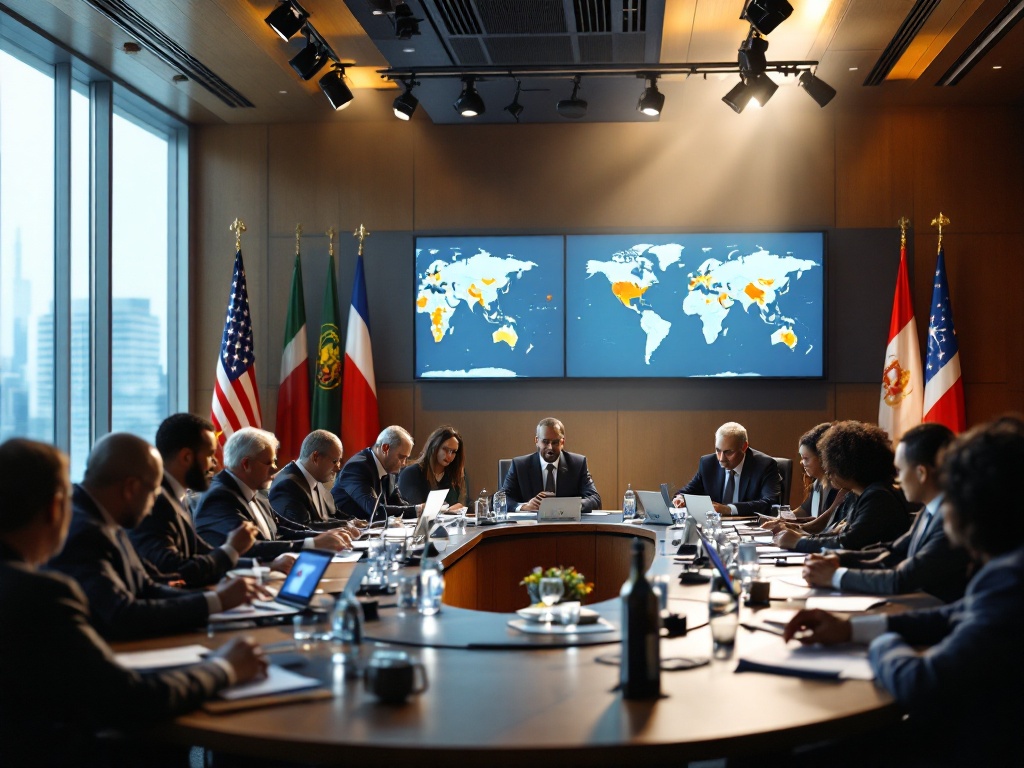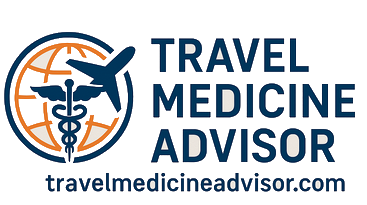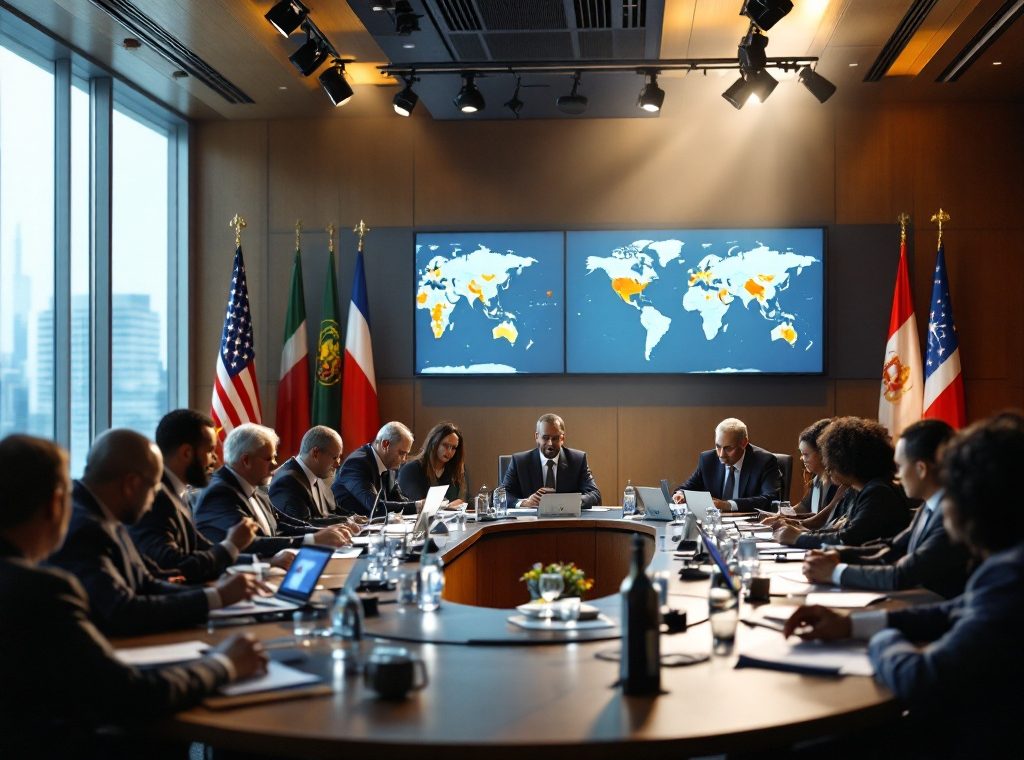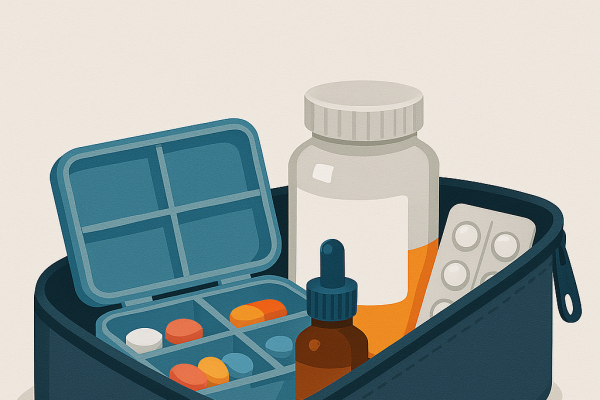Infectious Diseases and Global Travel: Rules, Regulations, Laws
Disease outbreaks don’t respect borders. Learn how global health security relies on international collaboration and organizations like the WHO to combat cross-border health threats. Discover the crucial role of the International Health Regulations (IHR) in coordinating responses to public health emergencies and how National IHR Focal Points ensure rapid communication and action. Explore how the CDC collaborates with international, federal, state, and local authorities, employing tools like the Do Not Board list and travel restrictions to protect public health. Understand your rights and responsibilities as a traveler, including pre-travel consultations and adherence to health recommendations. Read on to gain valuable insights into the complex world of global health governance and how it works to keep you safe.
Important information

- The WHO plays a vital role in global health security by setting standards, coordinating responses to health crises, and working with countries to strengthen health systems.
- The International Health Regulations (IHR) provide a legal framework for global health security, outlining countries’ obligations during public health emergencies, including reporting and response procedures.
- The CDC collaborates with state and local health departments, and other federal agencies like Homeland Security, to protect public health within the U.S. and at its borders, including implementing travel restrictions if needed.
- In the US, public health is a collaborative effort between federal, state, and local authorities, with the Secretary of Health and Human Services playing a key oversight role, especially during emergencies.
- Travelers have a right to health information and a responsibility to follow health recommendations, including consulting a doctor about needed vaccinations and medications before traveling.
Global Health Governance and Interstate Cooperation
Global health governance relies on international collaboration to tackle cross-border health threats. The World Health Organization (WHO) plays a crucial role, working with countries to reinforce health systems and respond to emergencies. This cooperation is essential for global health security, shielding populations from infectious diseases. By sharing vital information, resources, and expertise, nations can synchronize responses to outbreaks and pandemics. This joint approach also strengthens international health regulations and advances best practices for disease control.
The Role of WHO in Global Health Governance
The World Health Organization (WHO) plays a vital role in international health by establishing crucial standards, leading disease prevention initiatives, and coordinating responses to health crises. The WHO collaborates closely with governments to implement health regulations and ensure adherence to the International Health Regulations (IHR). This partnership bolsters global health security and safeguards populations from the international spread of disease. The WHO’s efforts are essential for a healthier world.
The Role of International Health Regulations (IHR)
The International Health Regulations (IHR) establish a crucial legal framework for global health security. They outline the rights and obligations of countries regarding public health emergencies. The IHR specifically address how nations should detect, assess, and respond to such events, particularly those with the potential for international spread. Countries are required to develop core capacities for rapid detection and response, enabling them to effectively manage health emergencies. By preventing and protecting against the spread of disease, and by controlling and responding to international outbreaks, the IHR ensure a coordinated global public health response.
What are International Health Regulations?
The International Health Regulations (2005) are a legal agreement signed by 196 countries, including every WHO member. Their purpose is to prevent and control diseases, protecting the world from international outbreaks through coordinated responses. The IHR (2005) outlines each country’s responsibilities, such as managing international health emergencies. A crucial component of this management is the establishment of National IHR Focal Points, which enable direct communication with the WHO. The regulations also define the criteria for declaring public health emergencies of international concern.
How IHR Coordinates Global Health Security
Countries are required to report public health events under the International Health Regulations (IHR). This reporting is crucial for international collaboration to stop outbreaks. The World Health Organization (WHO) leads this global response, providing guidance and support to countries dealing with health crises. This coordinated approach strengthens global health security.
National IHR Focal Points and Their Responsibilities
National IHR Focal Points are critical for global health security. They provide immediate notification to the World Health Organization (WHO) regarding potential international health emergencies. This rapid reporting is essential. These focal points also spearhead their nation’s response to public health threats and guarantee compliance with the International Health Regulations (IHR). By continuously monitoring public health risks and sharing vital information with the WHO, they contribute significantly to safeguarding global health. The key roles of National IHR Focal Points include:
- immediate notification to WHO of potential health emergencies,
- leading national responses to public health threats,
- ensuring compliance with International Health Regulations, and
- monitoring and sharing vital information with WHO to protect global health.
Public Health Emergencies and IHR Protocols
The International Health Regulations (IHR) establish procedures for managing international public health emergencies. These regulations require countries to assess risks and implement appropriate health measures. The IHR emphasizes evidence-based responses and international collaboration to effectively manage global health threats. Its aims include preventing and protecting against the spread of disease, as well as controlling and responding to international outbreaks.
Safeguards for Travelers Under IHR
The International Health Regulations (IHR) protect travelers while minimizing disruptions from health screenings. These measures prevent discrimination and promote responsible data management for information collected during health checks. The IHR balance public health needs with individual liberties, particularly during international emergencies.
Regulatory Mechanisms and the Role of CDC
The CDC collaborates with state and local health departments, providing technical assistance, funding, and resources. This coordinated approach effectively addresses public health threats. Information sharing and joint planning are crucial to this collaborative effort.
The Public Health Service Act authorizes the CDC to issue orders preventing the introduction and spread of communicable diseases. These orders may result in travel restrictions, quarantines, and isolation. The CDC follows established procedures, including scientific assessments, risk evaluations, and legal review, when issuing such orders.
While the CDC offers guidance and support, state and local authorities are primarily responsible for implementing and enforcing public health measures within their jurisdictions.
Foreign quarantine regulations empower the CDC to prevent the entry of individuals and goods posing a health risk to the U.S., effectively blocking communicable diseases at the border. These vital regulations are based on scientific evidence and international health standards, safeguarding public health.
How CDC Coordinates with State and Local Authorities
The CDC partners with state and local health departments to protect public health. This collaboration is crucial for detecting and responding to health threats, such as tracking diseases and investigating outbreaks. They also implement emergency control measures when necessary.
The Procedure and Impact of CDC Issued Orders
The CDC can restrict travel from specific countries to protect public health during health risks. These orders limit travel from affected regions to control disease spread, a crucial safeguard for the US.
Foreign Quarantine Regulations: Suspension of Introduction
The CDC can bar entry to the U.S. from countries with high disease risk to protect public health during international travel. This measure safeguards Americans and helps prevent outbreaks.
National Health Measures and Their Impact
US health regulations are implemented through a complex collaboration of federal, state, and local agencies. The Centers for Disease Control and Prevention (CDC) develops federal guidelines and supports other agencies. State and local health departments enforce these regulations and implement control measures. This collaborative system ensures coordinated responses to public health threats.
The Secretary of Health and Human Services (HHS) oversees the department of the same name, which includes the CDC. This Secretary sets national health priorities and shapes policies. During public health emergencies, they have substantial authority, including the power to declare emergencies and authorize measures like quarantine and isolation under Section 319 of the Public Health Service Act.
How the US Implements Health Regulations
The US public health system is a collaborative effort between federal and state authorities, overseen by the Secretary of Health and Human Services. This partnership is crucial for protecting the population, managing disease outbreaks, and ensuring a coordinated response to health threats.
Strengths
- Enables rapid response to disease outbreaks.
- Provides a unified approach to health threats.
- Works to maintain effective health protections for all US citizens.
Challenges
- Coordination of efforts across different states can be complex.
- Funding inequalities can create disparities in public health capabilities.
The Role of the Secretary of Health and Human Services
The Secretary of Health and Human Services heads the Department of Health and Human Services (HHS) and is charged with safeguarding the health of all Americans. A critical aspect of this role involves preventing the entry, spread, and outbreak of communicable diseases within the US. This includes overseeing national health regulations and coordinating responses to any outbreaks. The Secretary works with HHS agencies like the CDC, as well as external partners, to achieve these vital public health goals and ensure the nation’s preparedness for disease threats.
Legal Framework for Quarantine and Isolation
The U.S. Constitution’s Commerce Clause empowers Congress to regulate commerce between states and with other nations. This crucial power allows the federal government to establish quarantines, preventing the spread of infectious diseases both internationally and domestically. Presidential executive orders bolster this authority, providing additional legal support for federal quarantines, particularly during public health emergencies. These orders often grant specific enforcement powers to agencies like the CDC. Furthermore, the United States Code details specific laws addressing communicable disease control, including provisions for both quarantine and isolation, forming the legal bedrock for protecting the nation’s health.
Federal Authority for Quarantine: Commerce Clause
The U.S. Constitution’s Commerce Clause grants the federal government authority over interstate and foreign commerce, including crucial health measures. For example, to prevent the spread of disease, the government can implement quarantines and isolations, stopping illnesses from crossing state lines or entering from abroad. This power is essential for safeguarding national public health security.
Executive Orders and Federal Quarantine Authorization
Executive Orders identify the diseases necessitating federal quarantine, a critical step in establishing the government’s emergency response framework for public health. These orders form the foundation of the system.
The United States Code and Communicable Diseases Control
The United States Code provides guidelines for managing infectious diseases, granting the federal government the authority to intervene and implement quarantines. This crucial power prevents the introduction and spread of diseases within the US, safeguarding public health.
Public Health Travel Restrictions and Their Effects
The Do Not Board list restricts travel for individuals infected with contagious diseases to prevent their spread. This measure protects public health. Public Health Lookouts identify travelers who may have been exposed, some of whom may already be ill. The CDC and Homeland Security collaborate to screen passengers and enforce airline regulations regarding infectious diseases. This screening takes place at ports of entry, and quarantine may be necessary. These combined actions help contain outbreaks.
The Do Not Board List and Public Health Lookout
The Do Not Board list prevents individuals with contagious diseases from flying, a crucial measure in stopping international outbreaks. The Public Health Lookout system alerts officials to potentially risky travelers, enabling prompt assessment and management upon arrival. This system is vital for safeguarding public health.
How CDC Partners with Homeland Security
The CDC and DHS work together to protect public health and prevent the spread of disease through air travel. This collaboration enhances health security at borders and airports. DHS helps the CDC enforce travel restrictions, including managing the Do Not Board list. Joint passenger screenings and implementing airline regulations are also key aspects of their combined efforts. This important partnership protects travelers by limiting the transmission of contagious diseases, leading to safer and healthier journeys.
Screening Passengers and Air Carrier Regulations
Airlines screen passengers for symptoms of contagious diseases, such as COVID-19, before boarding to protect public health. This measure helps curb the spread of illness during air travel.
Rights and Responsibilities of Travelers
Traveler health and safety involves both rights and responsibilities. You have the right to accurate health risk information about your destination, and the responsibility to follow public health recommendations like vaccinations and safety guidelines.
Before any trip, consult your doctor or a travel clinic for destination-specific advice. This often includes recommended vaccinations, medications, and ways to prevent infectious diseases.
Familiarize yourself with local health rules and customs. Some countries require specific vaccines or medications for entry.
A healthcare professional can help determine what you need based on your itinerary and health history. Remember, some vaccines require multiple doses or specific timeframes for optimal effectiveness.
Pack a basic first-aid kit and any necessary prescription medications.
Travel Health Recommendations and Precautions
Before your trip, discuss your travel plans and any health concerns with your doctor. They can recommend necessary vaccinations and medications to ensure a safe and healthy journey.
Vaccines, Immunization, and Travel Medication
Consult your doctor or a travel clinic to determine the necessary vaccinations for your trip. Some countries require specific vaccinations for entry, so this consultation will ensure you comply with regulations and protect your health. This proactive measure helps safeguard you from potential health risks at your destination.















